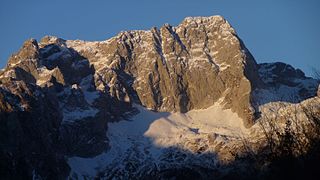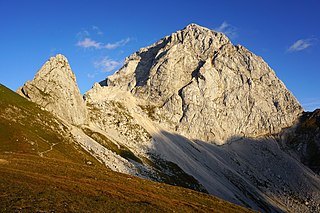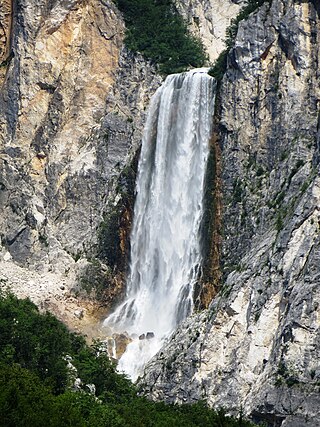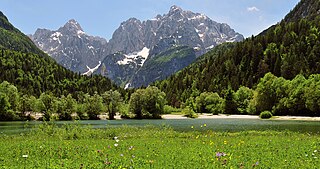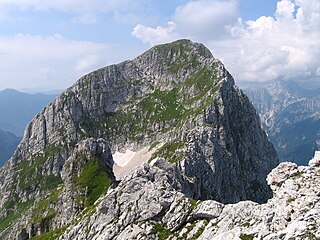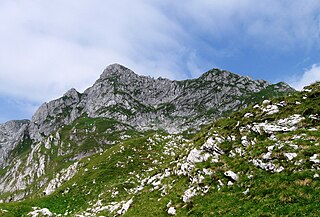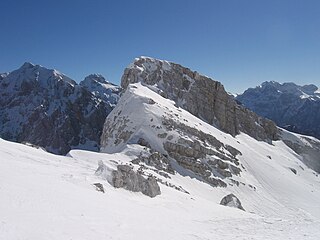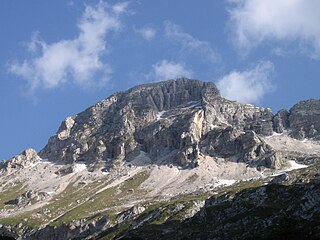10 Sights in Bovec, Slovenia (with Map and Images)
Legend
Welcome to your journey through the most beautiful sights in Bovec, Slovenia! Whether you want to discover the city's historical treasures or experience its modern highlights, you'll find everything your heart desires here. Be inspired by our selection and plan your unforgettable adventure in Bovec. Dive into the diversity of this fascinating city and discover everything it has to offer.
Activities in Bovec1. Pelc nad Klonicami
Pelc above Klonice is a distinct mountain located in the heart of the Jalovec group. Its peak stands on the far northern edge of the Pelci mountain massif, which we mountaineers have forgotten. The ridge stretches from Pelac to Ruša all the way to the mentioned peak along a narrow and steep slope above the precipices of the Last Trenta and the Bale Valley. Below the mountain is the Shelter under Špičkom, from which we can reach the top only with professional climbing equipment, as there are no marked but only partially marked trails leading to it. From the top, you can see the mountain groups of Triglav, Razor and Prisanka - Prisojnik, Škrlatica, Kanin, Krno and Bogatin - Bogatin, Mahavšček or Veliki Bogatin, as well as Jalovec and Mangart. In good weather, you can also see the Austrian peaks in the Hohe Tauern, such as the Großvenediger and the Großglockner.
2. Mangart
Mangart or Mangrt is a mountain in the Julian Alps, located on the border between Italy and Slovenia. With an elevation of 2,679 metres (8,789 ft), it is the fourth-highest peak in Slovenia, after Triglav, Škrlatica and Mali Triglav. It was first climbed in 1794 by the naturalist Franz von Hohenwart. Mangart is also the name of the mountain range between the Koritnica Valley and the Mangart Valley, with the highest peak called Veliki Mangart.
3. Slap Boka
Boka is a waterfall in the western part of Slovenia, near the Soča River. It begins at a karst spring and has two stages, of which the first is 106 meters (348 ft) high and 18 meters (59 ft) wide, and the second is 33 meters (108 ft) high.
4. Razor
Razor is a pyramidal mountain in the Julian Alps and the sixth-highest mountain in Slovenia. First ascended by Otto Sendtner in 1842, it is now frequently ascended, with numerous mountain huts available for climbers.
5. Bavški Grintavec
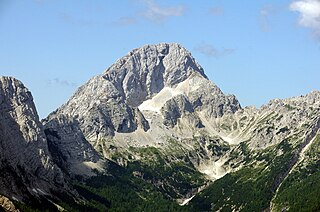
Bavški Grintavec is a mountain in the Julian Alps and, with 2347 m, the highest peak in the southern part of the Jalovec group. Its three ridges, which end at its top, rise above the valleys of Bavšica, Poslední Trenta and Trenta. The southwestern ridge, which is the longest, begins at Kal-Koritnica in the Bovec basin and rises over the pointed peak of Svinjak to Škrbina in Brda. From there, it rises steeply over Vrh Brdo and Mali Grintavec all the way to the main peak. From it, in the same direction, the northeastern ridge descends over Sravnik to the Velika vrata saddle, which separates it from Srebrnjak and Trentsky Pelc. The shortest northern ridge descends steeply to the nearby Kanja saddle, which separates it from the longer ridge of Pelci and the central Jalovec group.
6. Alpine Botanical Garden Juliana
The Juliana Alpine Botanical Garden in Trenta was founded in 1926 by Albert Bois de Chesne (1871-1953) at the foot of Kukla. He planted plants in it that he had brought from the surrounding mountains in the spring of 1929. He was assisted by other experts and botanists, as well as Julius Kugy. Most of the plants were brought from the Eastern and Western Julian Alps, the Friulian Hills, from the karst moors and the pre-Alpine world, but also from the Karavanke and the Kamnik-Savinja Alps.
7. Briceljk
Briceljk is a 2,346 m high mountain in the western Julian Alps and the highest peak in the ridge of the Loška stena, which rises more than 1000 m above the Koritnica valley, and stretches from Vrh Krnica in the southeast to Plešivec in the northwest. To the southeast, it falls with a side ridge, grassy slopes and rocky thresholds to the saddle between it and the lower-lying Stador, from where, with its starting point in the Bavščica valley, it is still the easiest to reach along an unmarked trail and a partial pathlessness. The peak is located within the Triglav National Park.
8. Morež
Morez is a 2,261 m high mountain in the western Julian Alps. Its north-western walling, together with the neighbouring ridge peaks, consists of the famous Loška stěna, which rises more than 1000 m above the Koritnica valley and stretches from the Krnica Peak in the southeast to Plešivec in the northwest. Morež is located approximately in the middle of the Loška Wall, between Briceljko and Konjska škrbina. The top itself is rocky, and to the southeast it falls with a steep grassy slope and rocky thresholds into the bottom of the natural fault of Lepoč. Below the Horse Stub there are karst floors with numerous rocks as well as abysses. The southern slopes of Morež are on the list of nature reserves of Slovenia.
9. Suhi vrh
Suhi vrh is a mountain above Vršič in the Julian Alps, not far from the ridge of Mala and Velika Mojstrovka and Travnik, from which it is separated by a smaller saddle. Due to this and the demanding off-road, the lower Suhi vrh receives little visit.
10. Lopa / Monte Leupa
Lopa is a 2,406 m high mountain in the western part of the Julian Alps, on the Italian-Slovenian border. It is located in the central part of the Kanina group, northeast of Prevala - it is separated from it by a stubble and an intermediate ridge of Golovac - Vršičev pod Lopo. To the east, the ridge of Horse Shelves, Ugly and Huda Vršič continues from Lopa, where it ends at a deep crevice. On the northern Italian side, a wide cliff falls from the top ridge, while to the south it falls with steep grassy and rocky thresholds to the mill above the Krnica valley. Normal access to the top of the Lope is from the east-lying creek along an unsecured path marked with mounds.
Share
How likely are you to recommend us?
Disclaimer Please be aware of your surroundings and do not enter private property. We are not liable for any damages that occur during the tours.
